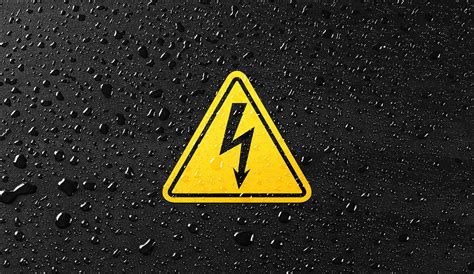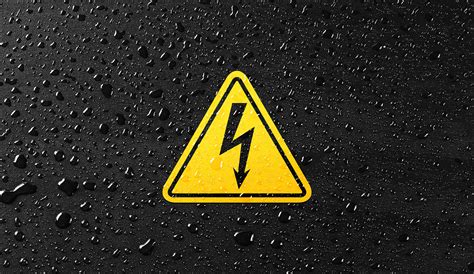electrical blue box behind shower pipe condensation Condensation inside electrical enclosures can cause several problems, such as corrosion, short-circuiting, and equipment failure. By understanding how condensation occurs, you can take steps to prevent it and . CANTEX 5133705 is a 4 in. x 4 in. x 2 in. Junction Box designed to support electrical devices and fixtures as well as providing protection for wires and terminals
0 · prevent condensation in electrical enclosures
1 · how to prevent condensation in electrical
2 · electrical wire behind shower tile
3 · electrical enclosure condensation protection
4 · electrical box behind shower wall
5 · electric shower wall
6 · condensation inside electrical enclosure
7 · condensation in outdoor enclosures
A distribution box ensures that electrical supply is distributed in the building, also known as a distribution board, panel board, breaker panel, or electric panel. It is the central electrical supply system of any building or property.
Some codes prohibit the placement of electrical wires behind a shower’s tiled wall, while others allow it under specific conditions. It is advisable to consult with a licensed electrician familiar with local regulations to ensure compliance and safety. We are replacing the tile and backerboard around our shower. . .when we pulled the old gypsum board down, we realized that the back side of the outlet in one of the .AttaBox’s robotically applied foam-in-place gasket ensures a complete seal, reducing the likelihood of unwanted temperature changes that can lead to condensation. Periodic . Condensation inside electrical enclosures can cause several problems, such as corrosion, short-circuiting, and equipment failure. By understanding how condensation occurs, you can take steps to prevent it and .

i have a ge breaker box and it is full. it is full with the little breakers so i can not condense them down. i added on a room and i want to but an ac heating unit that takes a 220v . Most code still doesn't allow you to have outputs or junctions near running water that are not GFCI. If you rewire simply don't expose a junction (that includes any broken wire in the walls) near the shower. You can pass .If warm air gets into the wall cavity - behind the vapor barrier - the moisture in that air will condense on the cold concrete and wall studs and that water accumulation will cause mold. . Moisture may gain access to an electrical panel box via the following: Poor or damaged seals around the electric meter. Rainwater can seep through gaps and cracks in the .
Electrical arc flashes due to exposed or otherwise damaged wiring in the panel box can lead to burns. Other conditions that can lead to moisture getting in your panel box include: . Install a junction box at the inside/outside passage of the conduit and pack the conduit entering into the inside with duxseal. Some codes prohibit the placement of electrical wires behind a shower’s tiled wall, while others allow it under specific conditions. It is advisable to consult with a licensed electrician familiar with local regulations to ensure compliance and safety. We are replacing the tile and backerboard around our shower. . .when we pulled the old gypsum board down, we realized that the back side of the outlet in one of the bedrooms is right behind the shower wall. I figure we have 3 options:
prevent condensation in electrical enclosures
AttaBox’s robotically applied foam-in-place gasket ensures a complete seal, reducing the likelihood of unwanted temperature changes that can lead to condensation. Periodic inspection and maintenance of the enclosure can help you be proactive about preventing condensation.
Condensation inside electrical enclosures can cause several problems, such as corrosion, short-circuiting, and equipment failure. By understanding how condensation occurs, you can take steps to prevent it and protect your electrical systems. i have a ge breaker box and it is full. it is full with the little breakers so i can not condense them down. i added on a room and i want to but an ac heating unit that takes a 220v and 20amp plug but i do not have any space.
Most code still doesn't allow you to have outputs or junctions near running water that are not GFCI. If you rewire simply don't expose a junction (that includes any broken wire in the walls) near the shower. You can pass insulated wire within the shower facing walls however. If warm air gets into the wall cavity - behind the vapor barrier - the moisture in that air will condense on the cold concrete and wall studs and that water accumulation will cause mold. This is so elementary to finished basements that I am having trouble believing someone would argue the point. Old breaker box is light blue box above the electric dryer. New main breaker box will be the purple box. Anyone have thoughts about the new location? Has anyone found a real life situation like this that had a problem? Thank you for looking. Moisture may gain access to an electrical panel box via the following: Poor or damaged seals around the electric meter. Rainwater can seep through gaps and cracks in the seal. Capillary action can allow moisture into the enclosure even if the access point is located underneath. Reinforcing fabrics.
how to prevent condensation in electrical
Electrical arc flashes due to exposed or otherwise damaged wiring in the panel box can lead to burns. Other conditions that can lead to moisture getting in your panel box include: Condensation due to high humidity levels in the home; Water dripping from condensation on a cold water pipe located over the panel box
Some codes prohibit the placement of electrical wires behind a shower’s tiled wall, while others allow it under specific conditions. It is advisable to consult with a licensed electrician familiar with local regulations to ensure compliance and safety. We are replacing the tile and backerboard around our shower. . .when we pulled the old gypsum board down, we realized that the back side of the outlet in one of the bedrooms is right behind the shower wall. I figure we have 3 options:
mounting electrical box to brick wall
AttaBox’s robotically applied foam-in-place gasket ensures a complete seal, reducing the likelihood of unwanted temperature changes that can lead to condensation. Periodic inspection and maintenance of the enclosure can help you be proactive about preventing condensation. Condensation inside electrical enclosures can cause several problems, such as corrosion, short-circuiting, and equipment failure. By understanding how condensation occurs, you can take steps to prevent it and protect your electrical systems.
i have a ge breaker box and it is full. it is full with the little breakers so i can not condense them down. i added on a room and i want to but an ac heating unit that takes a 220v and 20amp plug but i do not have any space. Most code still doesn't allow you to have outputs or junctions near running water that are not GFCI. If you rewire simply don't expose a junction (that includes any broken wire in the walls) near the shower. You can pass insulated wire within the shower facing walls however. If warm air gets into the wall cavity - behind the vapor barrier - the moisture in that air will condense on the cold concrete and wall studs and that water accumulation will cause mold. This is so elementary to finished basements that I am having trouble believing someone would argue the point.
Old breaker box is light blue box above the electric dryer. New main breaker box will be the purple box. Anyone have thoughts about the new location? Has anyone found a real life situation like this that had a problem? Thank you for looking. Moisture may gain access to an electrical panel box via the following: Poor or damaged seals around the electric meter. Rainwater can seep through gaps and cracks in the seal. Capillary action can allow moisture into the enclosure even if the access point is located underneath. Reinforcing fabrics.
electrical wire behind shower tile
electrical enclosure condensation protection
electrical box behind shower wall
electric shower wall

CNC milling machines are used to create complex and detailed parts, especially when working with metals, plastics, and wood. They are essential in the production of molds, dies, and prototypes. Manufacturing components for automobiles and airplanes. Creating precision molds and dies. Producing custom parts for electronic products. 2.
electrical blue box behind shower pipe condensation|condensation inside electrical enclosure